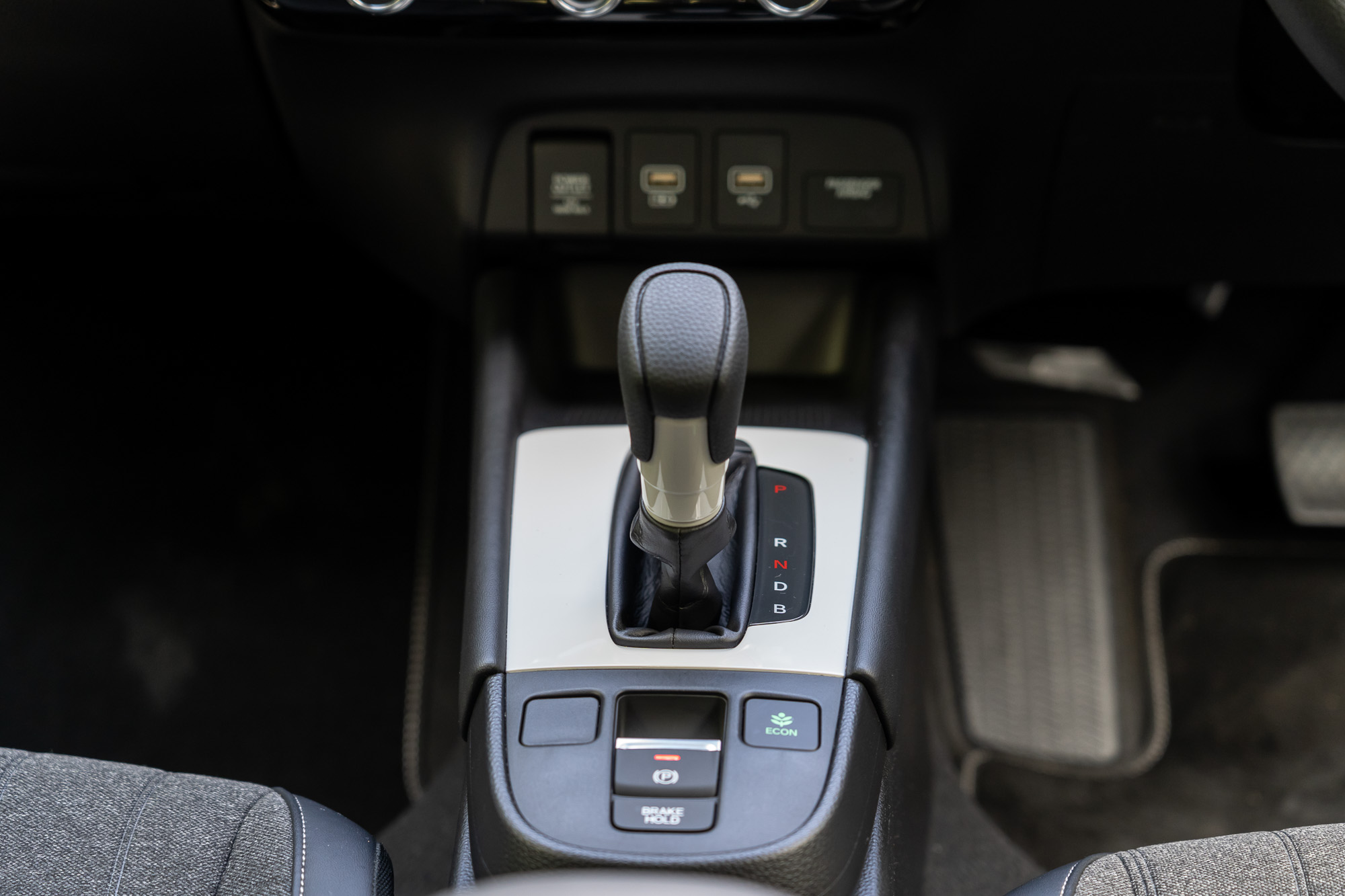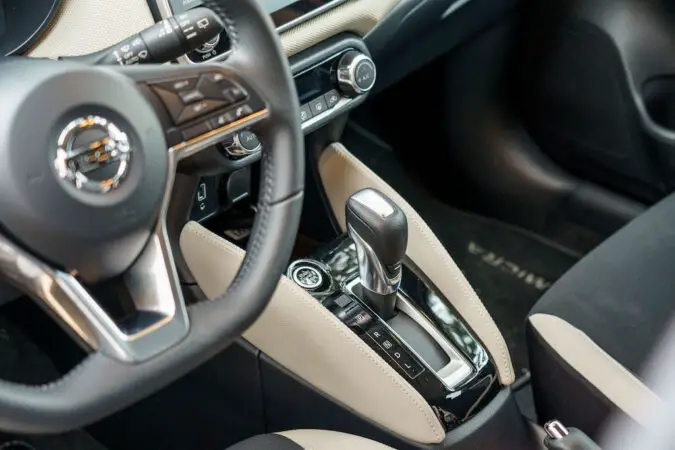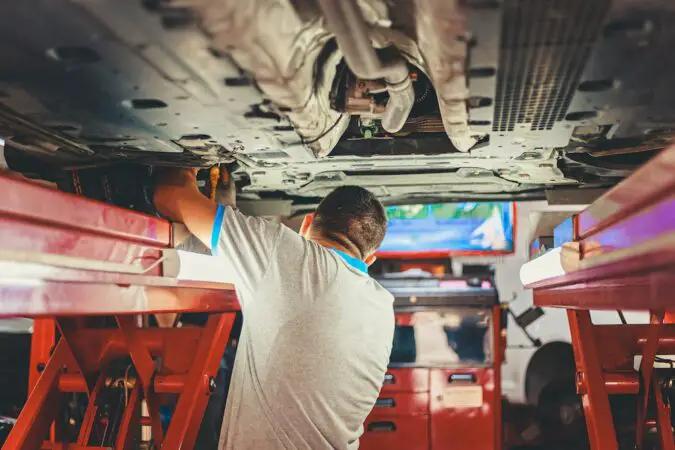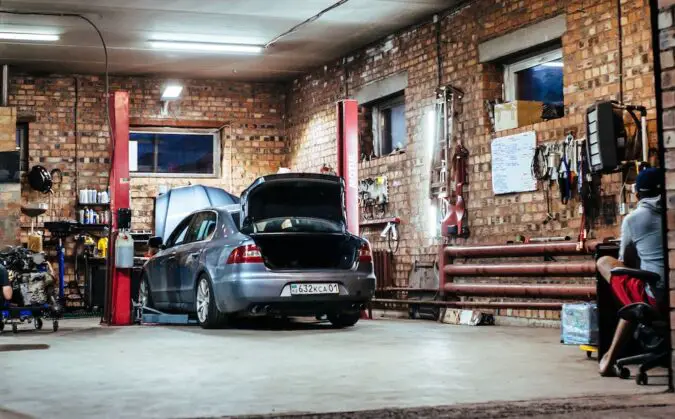With continual advances in automotive powertrains and technology, we’re seeing an accelerated pace of evolution starting to trickle in. From electrification to hybrid systems, the car industry is progressing far faster than any previous moment in history. Even transmissions, which haven’t really changed that much over the years, are shifting rapidly, too. But you do ask yourself, are CVT transmissions reliable?
Otherwise known as ‘continuously variable transmissions’, their principle is based on the revolutionary concept of changing gears… But without using any physical gears, at all. Through a system of pulleys, chains, and cones, a CVT gearbox is technically a gear-less transmission. Or, you might consider them to have an “infinite” number of gears, as CVTs could technically vary their gear ratios endlessly.
However, the advent, rise, and continued inclusion of CVTs aren’t without controversy. If anything, its reliability is a landmine to traverse. Nissan, for example, makes CVTs that are so unreliable, some are attributing it to causing Nissan’s decline. On the other hand, Honda also uses CVTs in their cars, but in stark contrast, are far more trustworthy. So, are CVT transmissions reliable, or should you avoid them?
What Are CVT Transmissions, Anyway?
Before we conclude are CVT transmissions reliable, it’s worth taking a moment to understand more about the component in question. So, what is a ‘continuously variable transmission’, and what does it do? As we all know, automotive gearboxes are typically classified either as an ‘automatic’, or a ‘manual’. The latter requires manual input to physically change gears, while the former does everything for you.
In that regard, a CVT transmission is technically an automatic gearbox, as it changes gears automatically. But while automatic transmissions still carry physical cogs (or gears) with set gear ratios to shift into, all CVT gearbox functions differently. In that, they don’t have any “gears” whatsoever. Interesting, CVTs (or non-planetary transmissions) date back over 500 years ago, drawn up by Leonardo da Vinci.
Rather than toothed wheels or cogs, CVTs use a pulley system. Thereby, not requiring a pre-configured set of gear ratios through the use of actual gears. Rather, CVTs could infinitely vary the gearing ratios without needing to rely on the mechanical and physical limitations of old-school gears. Although, CVTs are still marketed with “gears” by automakers, as their variability is somewhat engineered in.
In other words, you’re still dealing with higher and lower “gears”, even with a CVT, as well as shifting into park, reverse, neutral, and so on. Driving with a CVT is an interesting feeling. As you stomp on the gas pedal, you’ll see the revs climbing towards the redline. But once it’s there, the shifting doesn’t happen immediately. Following that momentary pause, the CVT kicks in, without any noticeable ‘shifts’.
What Are The Different Types Of CVT Transmissions?
In short, a CVT shifts gears without the feeling that your gearbox is physically swapping cogs around. It can be rather disconcerting if you’re not used to it. You can notice how the engine’s RPMs bounce up and down, as though you’re shifting into a different gear. However, it does so without any steps, jolts, or clear feedback. CVTs could shift up or down in a step-less manner, which is more efficient.
After all, even the best automatic gearboxes still have to “hunt” for the right gear, and then shift into it, back and forth. But how do CVT transmissions manage this, then? Before we discuss that in any detail, we should note that not all CVTs are built similarly. Commonly, there are three variations and types of CVT transmissions. While they follow the same concepts, how they function is quite unique:
- Pulley-Based CVT – They’re, by far, the most commonly-used type of CVT on the market today. Most cars that you see (assuming they’re using a CVT) will most likely use a pulley system. It uses an array of pulleys and belts (or chains), which is also found in power tools and other forms of machinery.
- Toroidal CVT – Instead of belts (or chains) and pulleys, a toroidal CVT applies the use of power rollers and discs. You probably won’t find too many cars using this. Essentially, their working principle isn’t too distinct from a pulley CVT. Just replace the pulleys with discs and the belt with a power roller.
- Hydrostatic CVT – Compared to the mechanical input required by a pulley or toroidal CVT, you could instead use fluids to change gears. You’ll usually find hydrostatic CVTs used in tractors and farming equipment. Pumps flow fluids into hydrostatic motors, converting pressure into rotational motion.
How Do (Pulley-Based) CVT Transmissions Work?
If you’re curious, we may as well discuss more how a CVT transmission changes gears, step by step. Learning this will help us comprehend more on are CVT transmissions reliable (or not). We’ll be focusing solely on pulley-based CVTs to describe its process, as they’re the most common. Hopefully, it’ll be sufficient to get the fundamentals out of the way, for how a CVT gearbox works:
Phase 1: How They’re Designed, And Its Constituent Parts
- First, there are three key components in a pulley-based CVT. There’s one ‘driving’ pulley that takes in the engine’s input (from the crankshaft), and another ‘driven’ pulley that outputs the CVT to your car’s driven wheels (through the driveshaft).
- In addition, you also have a robust metal chain (or sometimes, a rubber belt) connecting the two pulleys. The use of metal chains is a relatively newer advancement in CVT design.
- Those chains (aka a metal “belt”) consist of thin metal bands or links that hold equally durable pieces of metal in between that make up the center of the belt. Compared to rubber belts, a metal chain isn’t prone to slippage, is quieter, and could handle higher torque. Although, they are more expensive.
- Each pulley is designed as two 20° cones facing one another. This creates a groove or pit in the middle, where the chain or belt slots into and rides in. These belts/chains typically feature a V-shaped cross-section, to best grip the pulleys.
Phase 2: How They Could Vary Gear Ratios Infinitely
- Crucially, the pulleys can vary in diameter, pushing and pulling the cones against each other. This is actuated either using hydraulic pressure (from fluids), centrifugal force, or spring tension.
- If the diameter increases (the cones are further apart), the chain or belt rides lower in the V-shaped grooves. If the diameter decreases (the cones are closer together), the belt rides higher in the V-shaped grooves.
- This varies the pitch radius (distance between the center of the pulleys to the belt or chain’s point of contact) of the belt or chain.
- Note, that when one pulley increases its diameter, the other pulley decreases. For example, increasing the input pulley’s diameter will subsequently decrease the output valley’s diameter. And, vice versa.
Phase 3: How This All Translates Into Higher Or Lower Gears
- In doing so, this relative change in diameter (or pitch radius) will ensure that you could theoretically have an infinite number of gear ratios. Rather than 1st, 2nd, 3rd gear, and so on, it could granularly shift into higher or lower gears in a CVT.
- A smaller pitch radius on the input pulley and a larger pitch radius on the output pulley leads to slower rotational speeds. Thus, a lower gear.
- A larger pitch radius on the input pulley and a smaller pitch radius on the output pullet leads to faster rotational speeds. Thus, a higher gear.
- Therefore, this “infinite” number of gear ratios means that CVTs could “shift” gears at any engine RPM or vehicle speed. And since it’s not physically swapping cogs or wheels around, each shift (practically a pulley moving back and forth, with a rotating belt or chain in the middle) is seamless.
What Are The Pros Of CVT Transmissions?
With such a distinct design, construction, and functionality, CVTs have their own set of both objective and subjective benefits over conventional automatics. This may or may not help to offset whether are CVT transmissions reliable, and impact your ownership and driving experience. They include:
- Performance – A conventional automatic has to hunt for the right gears, while also spending crucial time swapping gears around. On the flip side, a CVT could more easily maintain your engine speed (RPM) in its most ideal powerband. Ultimately, a CVT could (on some occasions) provide better performance.
- Gearshifts – Since old-school transmissions have gears, shifting up or down requires the gearbox to change into them. Shifting into a different gear leads to a momentary loss of power from the engine, leading the car to jerk and wobble slightly. The seamlessness of a CVT can prevent this.
- Fuel Economy – Compared to an automatic or manual transmission, CVTs have proven to consume less fuel on average. This is tied to our previous point of its ability to maintain engine speeds in a well-balanced manner. It can cruise more steadily, accelerate more gradually, and keep your RPMs even.
- Design – CVTs have fewer individual components compared to traditional transmissions. It lacks all the planetary gears, cogs, wheels, and whatnot. All it has are those pulleys and a chain or belt running in between. With fewer parts and less complexity, it might entail fewer things that could go wrong.
- Weight – Once again, this continues our previous point of simplicity. With fewer parts inside, a typical CVT is smaller and is thus lighter, than conventional gearboxes. Owing to having less weight to carry around, CVT-equipped cars could leverage additional gains in fuel economy, too.
How About The Cons Of CVT Transmissions?
Still, you can’t win them all. While CVTs feature many advantages, their creation does come with several flaws and downsides. Some of these cons relate directly to the question of are CVT transmissions reliable. This could prove to be a deal-breaker for your next purchase. These include:
- Feeling – Most CVTs are programmed without a step-like feel (a sensation you’ll otherwise get in auto and manuals with real gears) in the shifts. Therefore, that distinct lack of feedback could sometimes make you think that the gearbox is either broken. Or, isn’t working properly.
- Noise – Some CVT transmissions have a tendency to stick around at higher RPMs, and could rev wildly with hard acceleration. This even occurs in those CVTs that have ‘steps’ in the gearshifts programmed in. Higher RPMs mean that both the engine and (CVT) gearbox are noisier under regular driving.
- Sportiness – While this may be quite subjective, most agree that CVTs aren’t sporty, at least not in how they feel. CVT gearboxes lack any sensation, crispness, control, or feedback that enthusiasts crave in their cars. It can feel rather monotone and dull, no matter how fast or hard you’re doing.
- Upkeep – Yes, CVTs are simpler than traditional gearboxes. However, repairing a CVT is far very costly, owing to its use of specialty parts, with only a handful of mechanics who know how to work on one. And, consider that CVTs use bespoke oils, so you can’t simply use off-the-shelf transmission fluids.
- Towing – Another critical con of CVTs, especially if you’re reliant on heavy-duty vehicles, is their inability to handle high torque and heavy load. Thus, why you won’t see CVTs in trucks all too often. Without fixed gear ratios, CVT-powered vehicles usually have towing capacities under 1,000lbs.
Are CVT Transmissions Reliable, Yes Or No?
Finally, we return to the topic of are CVT transmissions reliable; a solid yes or an absolute no? Well, it can be quite complicated, as the true answer depends on several key variables. So, more of a maybe, in regards to are CVT transmissions reliable. Primarily, assessing the reliability of a CVT transmission must be dissected on an automaker-by-automaker basis, rather than critiquing all CVTs as a whole.
For example, Nissan and Jeep have some of the worst track records for CVT reliability. They’ve used a series of CVTs from Jatco, a manufacturer of transmissions, and recently specializing in CVTs. They’ve been well-known to carry issues with shifting, poor performance, and premature failure. The latter of which had cost many owners thousands in repairs, or likely, having to replace the entire gearbox.
On the opposite end of the spectrum, we have brands like Honda and Toyota, who also use CVTs in their more contemporary line-up of cars. Subaru, too, has long developed their cars around CVTs. In fact, the first mass-market CVT-powered car in the US market was the Subaru Justy. But compared to Nissan, the likes of Honda, Subaru, and Toyota make some of the most reliable CVTs out there.
Additionally, and besides merely looking at who makes those gearboxes, and the automakers who’ve engineered them into their cars, we also have to take note of maintenance. That’s especially crucial if you’re buying a CVT-equipped vehicle from the second-hand market. Should this apply to you, it’s best to stay cautious and prudent about how the previous owner’s taken care of and serviced that CVT.
TL;DR, and if you’re keen on making a purchasing decision based on whether are CVT transmissions reliable, here are our takeaways:
Key Takeaways
- Although it hasn’t been an easy journey here, many CVTs (in general) made and sold in the last few years are typically quite reliable. Once again, it’s not always a given and will depend on both how a particular CVT’s been cared for, and who makes them.
- A more recent CVT (say, in the last 5 years or thereabouts) could handily last upwards of 100,000 miles without difficulty. With stringent, regular maintenance and care, it could easily go on even further.
- Try to avoid an early CVT. For example, those pioneers back in the 80s and 90s, which was mostly an endeavor by Nissan, among other Japanese marques. CVT transmissions from that era are risky at best as far as long-term reliability is concerned.
- Conduct your own research to assess the reliability of a particular CVT, especially those fitted onto a car that’s been on the market for a little while. Look at that car’s recall history, or perhaps complaints and lawsuits filed by owners. That’ll give you an idea if their CVTs could be trusted to function reliably. Using a site like CarComplaints.com is a great place to start.
- If you need to have a CVT gearbox, try to avoid Nissan. Even with their more recent models, we can’t yet trust that they’ve fixed all of the most teething CVT-related issues. It’s probably a good idea to wait and see what other owners and pundits think first, before getting a Nissan with a CVT.
- Otherwise, its rival brands like Honda and Toyota make some of the most reliable CVTs out there. We still highly recommend doing your own, thorough research of what other owners report back and have experienced. But a CVT-powered vehicle from either of those two shouldn’t present too many problems.
Are CVT Transmissions Reliable, By Automaker
Since we’ve mentioned it, here’s our summary of how the most popular automakers using CVT gearboxes fare:
- Nissan – Though they’re an early pioneer of CVTs, Nissan has quickly become the black sheep of the family. The most common cause of Nissan CVT failure is overheating (as is the case when you notice an “AT oil temp” light in a Subaru). This is blamed on the poor and inadequate cooling solution, as designed by Nissan. Nissan’s CVTs are well known for their loud whining sounds, sluggish response, not to mention shuddering, and premature death.
- Honda – For starters, we would like to debunk Honda’s claims that their CVTs use transmission fluid made to last a lifetime. No, nothing is designed with eternal life, including CVT fluid. Given time, they too have to be flushed and changed, to ensure good lubrication and cooling of a CVT gearbox. But in general, I’d argue that Honda makes the most reliable and trustworthy CVTs on the market.
- Toyota – As a company, Toyota is well-known for overbuilding its automobiles, and making some of the most dependable cars on the planet. Unsurprisingly, its philosophy extends to how it’s engineered and built CVTs. Like Honda, there’s not much more to say other than you could more readily put your faith behind a Toyota CVT gearbox working properly. And, with that old-school sturdiness on display.
- Subaru – More so than most other brands, Subaru has been a staunch defender of any criticism on its CVTs. The brand has continually praised how well their CVTs perform when it comes to fuel economy, emissions, as well as smooth performance. Quite a lot of Subaru owners even use their CVT-powered vehicles off the road. While not as bulletproof as Honda and Toyota, Subaru’s CVTs are still okay.
- Mitsubishi – Going back to (near) the bottom of the barrel, we have Mitsubishi. To be fair, Mitsubishi’s CVTs aren’t as untrustworthy or as pathetically unreliable as Nissan’s. However, they’re not too far off owing to the number of issues reported by many owners. Therefore, you’ll have to be very careful with its CVT-equipped cars. The silver lining is that Mitsubishis are generally far cheaper to purchase.
Tips On Maintaining Them
Before we end off our look at are CVT transmissions reliable, you might be curious as to how you can maintain and take good care of them. Regular servicing (and a light touch) will be vital to extending the lifespan and reliability of your CVT. So, here’s a quick to-do list for you to keep around to be sure that your CVT is getting all the pampering it deserves:
- Flush and change the transmission fluid regularly. This fluid isn’t only necessary for the CVT to work, but it’s also required for lubrication and cooling of its many moving parts. So, don’t be fooled by the claims of some automakers that CVT gearbox oils are meant to last a lifetime. A fluid change interval varies, but flushing it and swapping for fresh fluids every 25,000 or so miles is good practice.
- Avoid putting a lot of stress on the CVT. As we noted earlier, CVTs are mostly fitted on smaller cars or those with tinier engines. Most CVTs aren’t designed for higher torque and horsepower that manual or automatics are accustomed to. Thus, you should avoid putting excessive loads on any CVT vehicle. For instance, hard-driving, going off-roading or towing significant haul should be avoided.
- When you’re going to service it, make sure that you hand your car over to a professional transmission specialist who knows their way around a CVT. Remember, many workshops as of today still lack some of the skills and experience (as well as spare parts) concerning CVT-type gearboxes. Their unusual and intricate design means that misdiagnosis, poor servicing, or bad repair jobs could make things worse.
CVT Transmission Facts:
- CVT transmission uses a belt and pulley system to simulate changing gears depending on power demands, instead of using physical gears.
- CVT maximizes fuel economy and is widely found in Japanese cars such as Honda CRV’s, Subaru’s, Mitsubishi’s, and Toyota’s.
- It offers seamless acceleration with infinite gear ratios for optimized performance, maintaining a steady cruising speed.
- CVT transmissions are lighter and smaller than standard transmissions, taking up less space underneath the car, reducing weight profile, and making them a practical option for compact vehicles.
- Repairs for CVT transmissions can be expensive and require special oil, transmission fluid, and parts.
- Driving a car equipped with a CVT transmission feels different, and the throttle response may seem delayed compared to other transmissions, especially if you’re used to driving a vehicle with a standard transmission.
- CVT transmissions are designed to be practical with great fuel efficiency and are generally considered reliable transmissions.
- CVTs are especially popular in hybrids and SUVs because they offer excellent fuel efficiency and smooth, uninterrupted power delivery.
- The latest twist on the technology with the ‘launch gear’ handles the car’s acceleration up to 35km/h, then the CVT transmission switches over to the belt and pulley system.
- CVT transmissions are not ideal for high-torque applications, making it hard to achieve a sporty feel.
Final Thoughts
That then rounds off our look at are CVT transmissions reliable. Overall, CVTs have come a long way in regards to performance, capability, efficiency, and most importantly, reliability. Unlike early CVTs that were unveiled in the 80s, 90s, and early 2000s, you needn’t have to worry too much about problems in more recent CVTs. Although, it’s not always a given, and you should do your own extensive research.
So, are CVT transmissions reliable? Well, if you purchase one from 5 years ago or later, then sure, we could mostly agree that they’re fairly dependable. That’s unless it’s a Nissan, which has a lot to prove to try and regain our trust. Otherwise, and if you’re buying a used car, be diligent and wary of how its previous owner treated it. Anything less than strict attention towards servicing should be a red flag.






